Enter Your Email To Receive It Now!
You will only receive my emails and you can unsubscribe at any time.
Pets aren’t just animals, they’re an important part of the family. And if something should happen to your cat or dog, the last thing you’d want to be worrying about is vet’s bills.
You are trying to decide if you need pet health insurance, and if so, which company and policy is the best one for your pet. This ultimate guide is for you.
In addition I offer you my E-Book '' Help Your Cat Live Longer '' which costs 10$ on amazon for free.
As its name suggests this book will help you avoid the mistakes that many cat owners make, decrease the longevity of the cat.

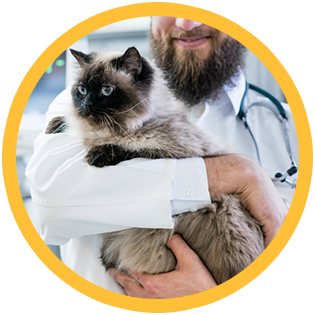

What particularly is pet insurance? If you own a cat or a dog, you know how costly an emergency trip to a veterinarian is.
A few years ago, pet owners could do nothing except paying the hefty fee and at the same time manage to make ends meet with the same money they have. Most Veterinarians expect full payments before they start treating your pet, and they don't offer payment plans.
It’s this simple reason that led to the emergence of pet health insurance programs. Pet health insurance works just like any other insurance. This insurance protects you as a pet owner, from any unexpected diseases and circumstances whereby you’ll have to pay lots of cash that you didn't plan for.
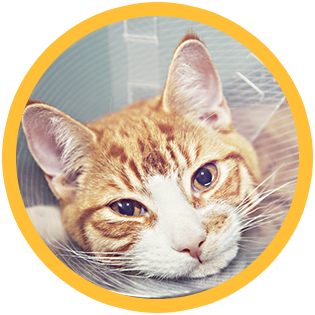

Determining whether to purchase dog insurance or cat insurance can be a difficult decision to make. Pet health insurance is best for pet owners who spend loads of money on treating their pet's medical conditions or those who don't have the resources readily available for emergency medical costs for their pets. Depending on the insurance policy you choose as a pet owner, you will realize significant savings on medical bills related to fatal accidents or illnesses.
The average cost for treatments of critical medical conditions like kidney transplants and radiation therapy can cost from $1,500 all the way up to $5,000. One cannot predict when a pet becomes ill or gets involved in an accident, and this is why all pet owners need pet insurance.
As a rule of thumb, be ready to pay monthly rates for your cat or dog insurance program. Pet insurance costs vary according to animal species (cat insurance is cheaper than dog insurance), your location (suburbs have lower premiums than metropolitan areas), the pets age (aging pets have costly premiums or aren’t insurable by most companies), and the breed of your pet (pure breed bulldogs have higher premiums than mixed breeds)
A pet health insurance will either cover a percentage of your vet bill or a fixed amount based on your benefit schedule.

- Pet insurance offers you protection against uncertainties. Illnesses and accidents are not predictable. In case your pet falls ill, you’ll know whom to approach for the money needed for treatment or surgery.
- Pet insurance will help you to offer your pet regular medical checkups without worrying about the expenses and how to settle the bill
- This insurance also enables you to afford the best medical treatment service for your pet. Without the insurance cover, you may find the treatment too expensive.
-Some pet health insurance programs offer you "Third Party Liability Coverage." This coverage will take care of any expenses incurred if your pet has caused injury or accidents.
- Pet insurance helps you to stay out of debt. You won’t have to borrow money or seek loans to cover emergencies.
- Your pet is entitled to the best care from you. A pet insurance program will offer your pet the best quality treatment, thus increasing the chances of quick recovery.
- Pet insurance allows you to seek the services of the most exceptional vet you can find. A highly skilled vet will use the latest medical techniques and equipment to treat your pet. The latest approaches of treatment can be very costly, but with the right insurance cover, you will be able to afford these facilities without worrying about the cost.
- You don’t need to pay loads of money at once to cover treatment expenses. With a pet insurance program, you’ll pay the required premium in small amounts on a monthly basis. If you don't have insurance coverage, you ’ll have to part with a considerable amount of money at once, which is often a big problem for many people.
- When your pet is insured, you don’t need to seek loans. This will save your money by evading interest payments.
- Insurance gives you peace of mind. You won't have to choose between your pet and the money.
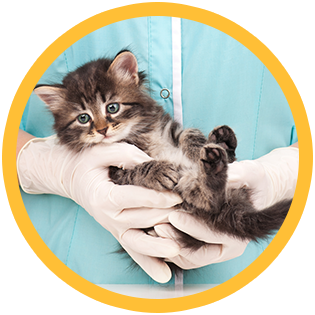
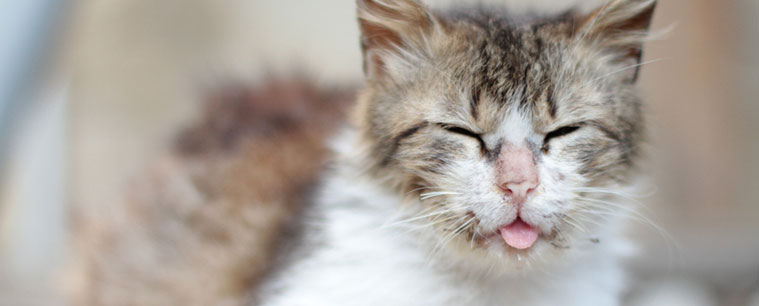
Most pet insurance plans mostly cover injuries. These injuries may include car accidents and injuries caused by eating foreign objects. Some pet insurance programs don’t cover injuries that are intentionally caused by family members.
Most pet insurance plans cover illnesses. These plans typically cover diagnostic tests as well as hospitalization and the treatment costs for the disease.
Some insurance plans also cover the cost of drugs that are recommended for your pet. Insulin and some pain relievers are quite expensive, especially for long-term medication programs. Most plans don’t cover medications or may curb the types of pet medication they cover. Some may exclude over the counter medications and routine medication programs such as tick and flea preventatives.
Most plans don't cover routine care. Routine care is made up of vaccinations, spay or neuter and regular vet visits, Insurance plans that cover routine visits may limit the number of services offered or the amount included in each year.
Some policies cover dental care for your pet, while some plans exclude it. Other programs also limit the kinds of dental services, e.g. only covering routine dental cleanings and basic dental care.
Most plans usually don't cover pre-existing medical conditions. Pre-existing medical conditions include any medical conditions that existed before buying the coverage. In some cases, insurance plans may limit the amount of coverage for some everyday pet medical needs, which include hip dysplasia and pregnancy.
A pet insurance policy can cover for your pet’s market price if you lose your pet or it gets stolen. The insurance service provider may also include the cost of advertising and tracing your lost pet and the cost of compensation for its recovery. Some policies also offer enough cover to replace your lost pet in case they cannot be found.
Apart from knowing what types of costs your cat insurance or dog insurance plan will cover, it’s also important to know the amount of money they will pay to cover the costs. Different plans use different criteria to determine how much they will compensate for a particular procedure or diagnosis. Some programs have constant rates, while others pay a specific percentage of the total veterinarian's charge.


Pet insurance typically falls under four main categories, with each having varying levels of cover. These categories are:
This type of pet insurance covers vet fees for sudden or unexpected pet injuries that occur within the policy period. Although most individuals often consider this as the cheapest pet insurance option, this type of insurance cover is suitable for covering accidents and minor health issues. Financial and time limits are also applicable, depending on the company’s policy terms.
Time-limited insurance policies allow claims for an eligible medical condition for up to a specific amount of money, with each condition covered for a maximum limit of 12-months. In case you reach the limit within the 12-month period, this type of policy will no longer cover the condition. The condition becomes pre-existing and is removed from future insurance claims. This means that you will be liable for additional treatment expenses after the 12 months, or when you exceed the financial limit for that condition.
This type of insurance is typically considered as a mid-budget option. This type of policy usually covers a new medical condition for a particular annual financial limit, as long as the policy remains active. This policy has no time limit. This means that your pet can be covered severally for a certain medical condition as long as the financial limit is not reached.
Once your financial limit is attained, the condition is excluded from any future claims. This means that you’ll be responsible for any medical costs from this point. For older pets, the policy charges may increase as well as the cost of the insurance premium because they are more likely to get medical attention.
This is the type of pet insurance policy that offers the most comprehensive medical cover for your lovely animal. As the name suggests, this insurance covers your pet for its entire lifetime, provided that you renew the policy on a yearly basis.
Under this policy, all medical conditions are covered until when you attain the financial limit. If the limit is exceeded during the insurance year, the insurance cover for that condition stops until when the policy is renewed. After renewing the policy, the limit is fully reinstated, and your pets’ condition will still be covered until when you exceed the limit again.
All lifetime policies are not similar, some may not cover your pets’ medical expenses for their whole life because of the age and the pets’ health condition. For older pets, the insurance premium, as well as the policy excess, may increase. To make sure you do have a lifetime cover for your pet, make sure you carefully go through the policy’s terms and conditions.
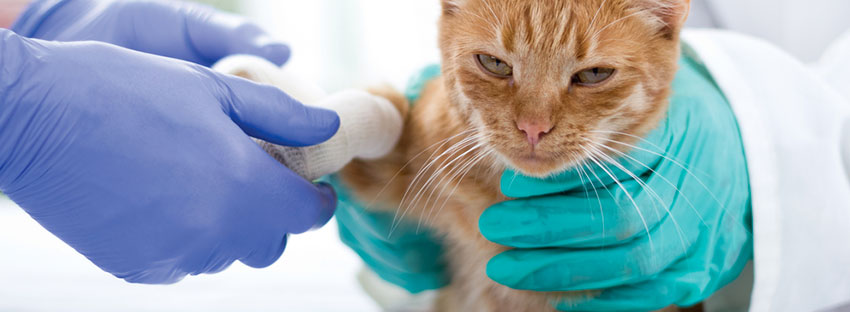
Below are some things you should be aware of before buying purchasing a pet insurance program.
1. Pet insurance doesn’t cover costs up front: Pet insurance does not work like most human health insurance programs where the insurance company compensates the doctor for all the medical bills balance. With pet insurance, you’ll need to typically pay for all the services rendered, then claim the amount from the pet insurance company, which will give you a reimbursement check.
2. Pet insurance doesn’t cover other wellness pet plans: Most pet insurance programs cover injuries and illnesses only. They don’t cover annual checkup and preventive services which include vaccines, dental cleanings, annual bloodwork, and heartworm medications. Wellness plans are offered separately in most cases.
3. Pet insurance is best for younger pets: If you have a young pet without any health problems, purchasing a pet insurance policy may make financial sense. Young animals are the cheapest to insure, and they seem to get into a lot of trouble more frequently. It’s common for small pets to chew and swallow objects carelessly, or even become injured while playing.
4. Pet insurance is not recommended for older pets: The older the pet, the more expensive it is to insure the pet. This is because older pets tend to suffer from more health problems including cancer, diabetes, and arthritis. As a matter of facts, most companies “age out” pets after a certain age and won’t offer coverage at any price.
5. All pet insurance policies aren’t similar: Always compare pet insurance programs basing on the premium and deductibles before purchasing a pet insurance policy. Go through all the available options and understand what each package entails. The pet insurance world is very confusing, ensure you do enough research and avoid making any assumptions. Different companies offer different policies with different benefits, go for a policy that best suits you.
6. Deductibles, premiums, and payouts and are foundations in any policy: The number of deductibles, premiums and payouts depend on several factors. These factors include your pet's age and breed, whether your pet is neutered or spayed and where you live.
7. All deductibles aren’t similar: The amount of deductibles depends on the pet insurance company. These deductibles can either be per incident/condition, annually or per visit. The best deductible option is annual since it doesn’t matter the number of times your pet goes to the vet as long as you’ve not exceeded the annual limit. “Per incident/condition” means you’ll only pay the deductible once a year for the same condition.
8. A pet insurance program doesn’t cover everything: Before buying a pet insurance policy, carefully go through it to know what’s covered and what’s not. In case you’re not sure about what’s covered, ask the company to clarify. Some insurance policies exclude common pet problems like hip dysplasia and cancer; while others cover these diseases. Some pet insurance companies limit or exclude benefits that come with cancer treatment but have cancer options you can include in your policy at an additional cost.
9. Customer service also matters: Most people often overlook this aspect when choosing cat insurance or a dog insurance service provider. Ask your family, friends, and veterinarians about the best insurance service providers in your region. Also look out for reviews on the internet which will give you a general idea to whether the company pays claims in time and whether they do fairly reimbursements for covered conditions.

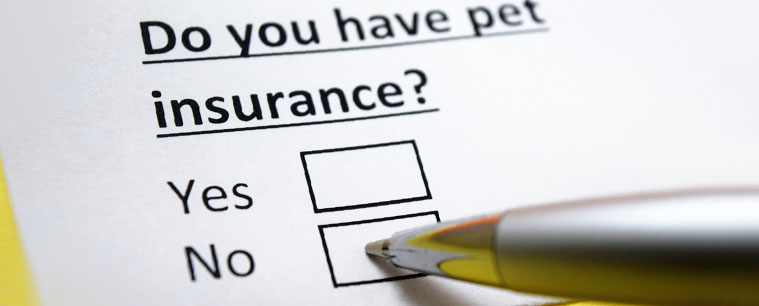
Here’s how you can get the best deal whenever you’re looking for the best insurance policy for your Pets.
1. Compare Pet Insurance Providers: Before enrolling your pet to a pet insurance policy, move around and compare the type of services offered by different pet insurance providers. Making a side-by-side comparison will help you realize the difference in premiums, co-pays, plans, deductibles, reimbursements and other plan details which including plan exclusions and features.
2. Look at the Insurer’s Track Record: An insurers track record can tell a lot about his/her dependability. A good insurer has proven experience, stability, and recommendations. The time that the service provider has been in business also matters. Is the business a trusted financial service provider? How many policies does the insurance company have? Does the company have veterinarians on board who know pets’ needs who help in developing policies?
3. Research on What’s Covered: You should also research on what the policy covers and what can affect the coverage. This is because most pet insurance plans have exclusions for hereditary, congenital, pre-existing, or conditions related to breeding.
Before enrolling, ensure you know the factors may affect your insurance coverage, also try to find out when, and why the cost of your premium will increase. Ask whether the number of claims you submit affects your premium. Ask for clarifications in case of any unclear insurance terminologies.
4. Choose a policy that best Works for You: Discuss your pet’s well-being with your veterinarian before buying an insurance policy. This will give you a general idea of the common health problems that your pet could face and whether they’re breed related or not. This will prepare you in case of emergencies or unexpected illnesses
5. Understand how insurance disbursement is calculated: Reimbursement is calculated in two ways. Either annually or percentage of invoice. An invoice is a bill your veterinarian gives you after finishing treating your pet. For the percentage of invoice disbursement plan, you will be given a percentage of what you spent in treating your pet. Several other factors can change your reimbursement amount.
6. Review Price and Value: Don't go for a cheap pet insurance policy that doesn’t cover what your pet’s needs. If you’re interested in your pet’s wellness, go for a monthly premium that will benefit your pet as well as yourself. However, don't base your decisions on costs alone. While lower premiums may sound great, most of them limit the number of benefits you will receive.
7. Enroll Young Pets: Enrolling pets when they’re still young and healthy avoids limited coverage that’s caused by pre-existing conditions. Similar to human health insurance, pet insurance premiums also increase as the animal ages.
8. Ask for Discounts: Do you know that you might be entitled to a discount on your premium? Most pet insurance programs offer up to a 5% discount to pet owners with 2-3 pets, and a 10% discount to families with 4 or more pets. If your employer offers pet insurance benefits, you could also get a discount on your total pet insurance cost. Other insurance plants offer discounts to a group of pet owners.
Healthy Paws is ranked well in all pet insurance services, Healthy Paws pet insurance program has excelled in limits, coverage and insurance claims for pets with chronic conditions. Their mobile app allows users to claim for benefits easily and quickly. The processing period is also quicker, and they do not have claim limits. This means that your animal will be well covered with the best available treatment through a licensed veterinarian. The company has also a friendly customer service with good reviews from happy and satisfied pet owners across the world. To enroll in this pet insurance plan, click here:
Just as the name suggests, Pets best has the best limits, claims, and reimbursement plans. This company has the best plans for older dogs and cats, with no upper age limits. Moreover, this is also among the top pet insurance companies started and run by an experienced veterinarian, which is why pets best have animal’s best interests in mind. As a pet owner, you can expect a high standard when giving out your money to help treat your pet. To enroll in this Pets Best insurance plan, click here:
Hartville Pet Health Insurance coverage plan covers injuries accidents and illnesses. It also features a simple reimbursement mode based on a percentage of your invoice. Unlike other pet insurance service providers, Hartville doesn’t have an extensive waiting period for ligament and knee conditions. The waiting period is only two weeks, which is the average waiting period for other pet diseases. Some companies have long waiting periods of up to 12 months for this type of coverage.
Pre-existing conditions aren’t covered, which is a common trait in all pet insurance companies. The coverage also excludes non-medical services which include grooming and other cosmetic procedures. Breeding costs are not covered as well. The payout rate is pre-selected on the customer, with no upper age limits for older pets and at least 8 weeks for younger pets. If you wish to enroll your pet to this program, use this link:
Petplan boasts of a long history. This family business started in the UK before they were moved to the U.S. Petplan offers insurance cover at least in every policy – illnesses, accidents, chronic conditions, hereditary conditions, and veterinary fees. With Petplan, you don’t have to let the cost prevent your pet from getting the care they need. Most pet insurance policyholders love this company because they pay claims quickly, easily, with a wide breed coverage. Purchase Petplan by clicking on this link:
Another pet insurance company that stands out from the rest in PetFirst. PetFirst has no limits on the number of incidents or on how old your pet is. This insurance program is best for pets with chronic conditions. PetFirst also has sweet discounts to members of the military, which is the best way to honor those individuals who have gone through thick and thin to serve our country and their hairy friends. Another advantage of PetFirst is that they also cover examination fees, not something you’ll find in every policy. To enroll to PetFirst insurance plan, click here:
While some companies boast of member portals and mobile apps, Figo has a Pet Cloud. When it comes to technology, Figo takes the bigger share of the cake. With this Pet Cloud, one can update information about your pet from anywhere in one location. The information will be used for reminders of appointments, or to provide you with all the records needed in case of emergency. Emergency vets prefer to have pets’ medical records before dealing with an emergency. Since sometimes emergencies occur after normal business hours, this Pet Cloud will provide your vet with medical records in a way that no other insurer can provide. To purchase the Figo pet insurance plan, click here:
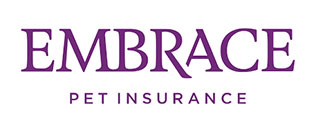
Embrace excels in covering your youngest pets. Embrace has a diminishing deductible, which is referred to as Healthy Pet Deductible.’ For every year that passes without making a claim, you’ll save $50 from your deductible. These savings can turn out to be great if you enroll early when your pet is still young and healthy. And in case you need to get the help of your policy in case of an illness or accident, Embrace will be available with a full accident and illness coverage. This coverage covers surgery, exam fees, rehab alternative therapies and much more to assist your pets to recover to their healthy self.
Do you own a hedgehog, a chinchilla or any other exotic pet and you’re looking for where you can insure it? Nationwide provides insurance for exotic pets. While most pet insurance companies only cover cats and dogs, Nationwide covers almost every exotic pet. This pet insurance cover is typically meant for individuals who own exotic pets and are looking for some broad coverage for exotic and avian pets. Although plans insurance plans at Nationwide are paid on a benefits schedule and not reimbursed based on the actual costs, this is still the best pet insurance policy for pets that are neither dogs or cats. Purchase Nationwide by clicking on this link:
While most pet insurance companies operate on claims and reimbursements, Trupanion does things differently. Trupanion uses a real-time dashboard used for claim approval. Trupanion pays approved veterinarians using the Trupanion program, thus allowing your pets to be treated with very small or no out-of-pocket costs. This company has revolutionized the industry, and it will shake up the pet insurance providers at large since more people will flock to a service that pays in advance, and not several days later. Enroll to Trupanion by clicking on this link:
Founded in 2017, 4Paws is the latest pet insurance service, provider. This company offers accident only coverage, basic accident and illness coverage, additional wellness coverage., to life policies. Their policies were planned with your pets in mind. Their plans are flexible, which means you can customize the coverage depending on your needs. 4paws doesn’t cover everything, but their website clearly outlines what they do and what they don’t on the cat insurance and dog insurance pages. Use this link to get this premium:
24PetWatch Pet Insurance Service company is at the forefront of pet insurance service delivery to Canadian and North American pet owners. Apart from offering pet health insurance, 24PetWatch has lost pet recovery services for pets. Its unique combination of pet services makes it the best one-stop-shop for a pet owner who is looking for all-around pet protection. The programs are also very flexible and affordable, which is why most pet owners settle for insurance programs from this company. Its pet recovery services use the industry’s largest database of pets and their owner information. You can sign up for 24perWatch using this link:
ASPCA Pet Insurance covers your pets while donating 10% of what you pay to shelter and other pets in need. ASPCA Pet Insurance does not have a full benefits schedule; however, their insurance plan only caters for a % cost of treating an illness in your region. ASPCA Pet Health Insurance also doesn’t cover hereditary and congenital conditions. But by using this link to purchase this an insurance policy at Aspca, you will not only be taking care of your pet but also offering home and shelter to other homeless pets.
While most people consider pets as family members, they can’t help but bear the pain of paying high medical bills for their pets. To avoid always using their money in paying for medical bills, they should insure their pets so that a pet insurance company settles all the medical expenses. Pet owners can also afford the luxury of using the best vets to treat their ill/injured pets without always digging into their pockets and borrowing money to settle the vet bills. These pet insurance companies have reduced the burden of your pet’s medical care on you and your family at large.
Lastly, remember to choose a Pet Insurance program that you feel good about. Ensure that you’re very comfortable with your insurance service provider when comparing pet insurance programs since they’ll be handling your claims. Go for a company that’s willing to provide comprehensive answers to any of your questions, as this will give you an overview on how your policy will be handled. Also, ascertain that the organization is reputable.
Sharing is Caring
"The 10 foundations of a fulfilling relationship with her cat"

© My Awesome Cat